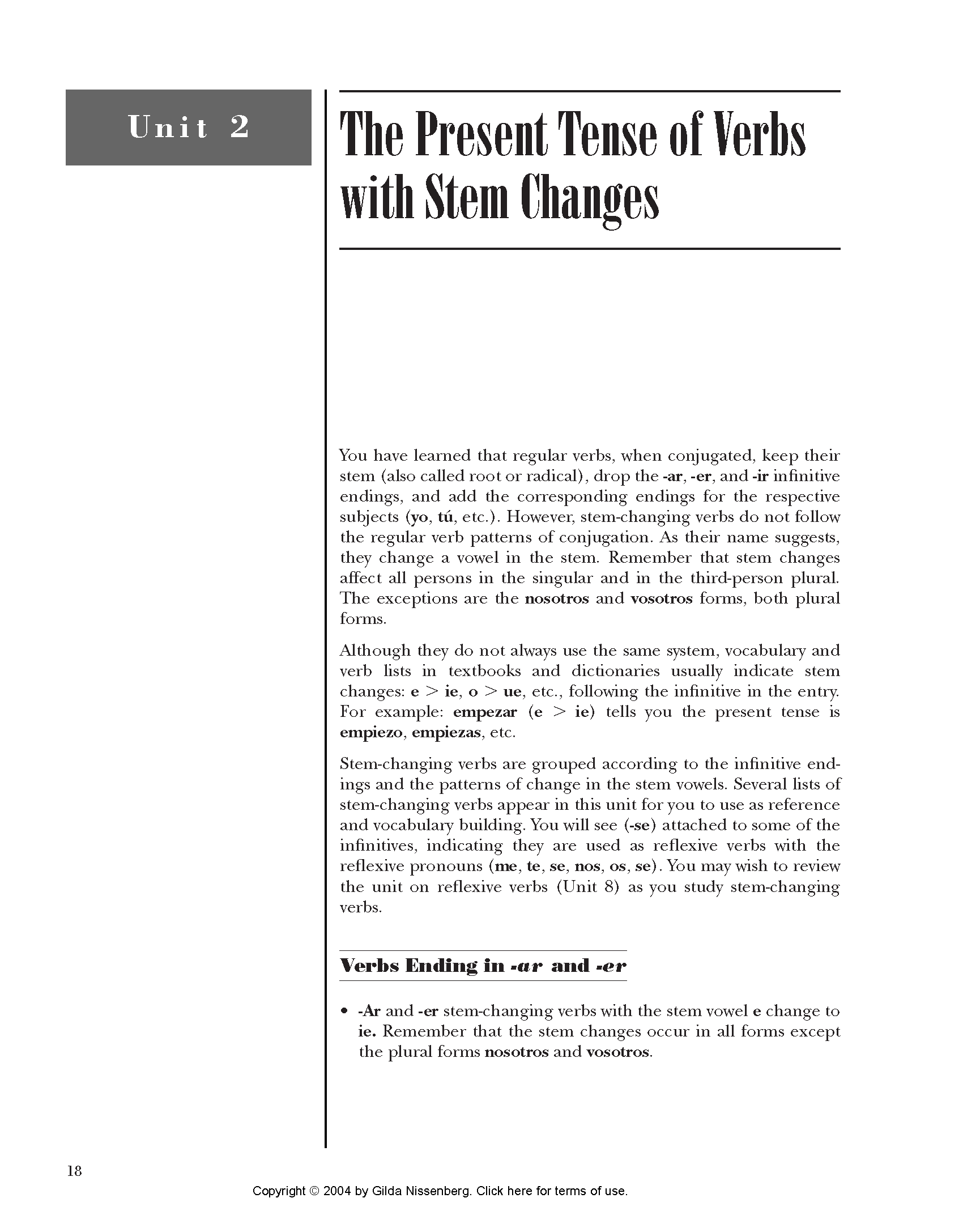CSG029

Unit 2
The Present Tense of Verbs with Stern 1'lianges
You have learned that regular verbs, when conjugated, keep their stem (also called root or radical), drop the -ar, -er, and -ir infinitive endings, and add the corresponding endings for the respective subjects (yo, tu, etc.). However, stem-changing verbs do not follow the regular verb patterns of conjugation. As their name suggests, they change a vowel in the stem. Remember that stem changes affect all persons in the singular and in the third-person plural. The exceptions are the nosotros and vosotros forms, both plural forms.
Although they do not always use the same system, Yocabulary and verb lists in textbooks and dictionaries usually indicate stem changes: e > ie, o > ue, etc., following the infinitive in the entry. For example: empezar (e > ie) tells you the present tense is empiezo, empiezas, etc.
Stem-changing verbs are grouped according to the infinitive endings and the patterns of change in the stem vowels. Several lists of stem-changing verbs appear in this unit for you to use as reference and yocabulary building. You will see (-se) attached to some of the infinitives, indicating they are used as reflexive verbs with the reflexive pronouns (me, te, se, nos, os, se). You may wish to review the unit on reflexive verbs (Unit 8) as you study stem-changing verbs.
Yerbs Ending in -ar and -er
• -Ar and -er stem-changing verbs with the stem vowel e change to ie. Remember that the stem changes occur in all forms except the plural forms nosotros and yosotros.
Copyright © 2004 by Giida Nissenberg. Ciick here for terms of use.
18
Wyszukiwarka
Podobne podstrony:
CSG032 21 The Present Tense of Yerbs with Stern Changes Keep in mind the following: • &n
CSG012 Unit 1 The Present Tense of Re«n lar Verbs, Irregular Verbs, and Verbs with Spellin
CSG352 Answer Key Unit 1 The Present Tense of Regular Verbs, Irregular Verbs, and Verbs with Spellin
CSG030 19 The Present Tense of Verbs with Stern Changes cerrar (to close) querer (to lewe,
CSG034 23 The Present Tense of Verbs with Stern Changes 7. ^Por que Uds. no_ (conv
CSG036 The Present Tense of Verbs witli Stern Changes 25 Yerbs that follow the pattern of
CSG028 17 The Present Tense of Regular Verbs, Irregular Verbs, and Verbs with Spelling Changes 7.
więcej podobnych podstron